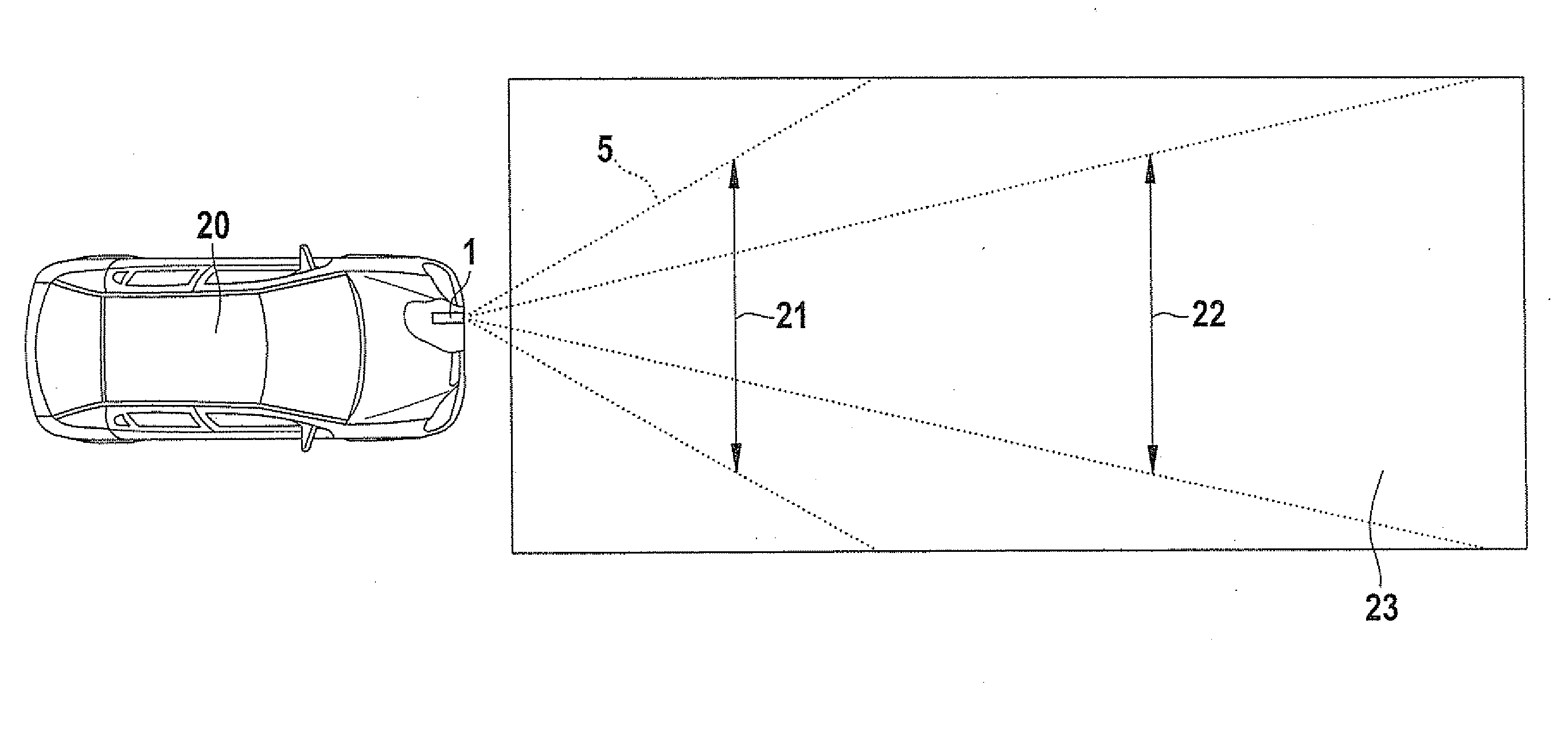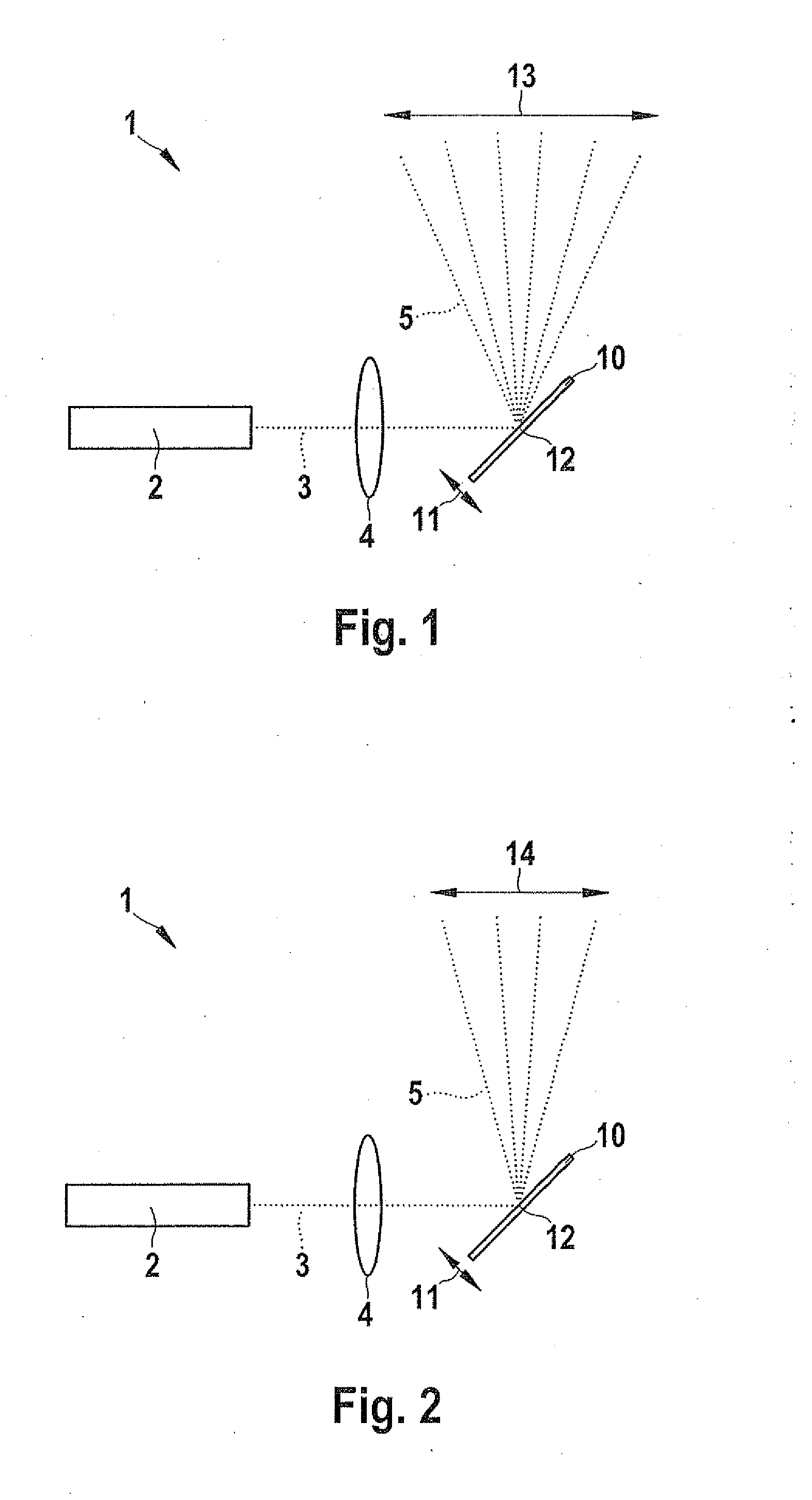Adaptive angle and power adaptation in 3d-micro-mirror lidar
a technology of micromirror and adaptive angle, applied in the field of adaptive angle and power adaptation in 3d micromirror lidar, can solve the problems of insufficient spatial resolution of images and the increase in signal-to-noise ratio, and achieve the effects of reducing radiation power, reducing deflection angle, and improving detection of objects
- Summary
- Abstract
- Description
- Claims
- Application Information
AI Technical Summary
Benefits of technology
Problems solved by technology
Method used
Image
Examples
Embodiment Construction
[0023]FIG. 1 schematically illustrates a LIDAR system 1 for recording the geometry of the environment of a motor vehicle. Using a laser 2, a laser beam 3 is produced, which is shaped via a focusing lens 4 and forwarded to a micromechanical mirror 10. Micromechanical mirror 10 is rotatable about an axis of rotation 12 situated perpendicular to the drawing plane, so that its circumference is able to execute a periodic mirror motion 11. Micromechanical mirror 10 may be driven electrostatically or electromagnetically. When controlled at its resonance frequency by a specified control signal, it executes an oscillating mirror motion 11, so that a scanning beam 5, which is formed by laser beam 3 reflected at micromechanical mirror 10, sweeps a first scanning region 13.
[0024]FIG. 2 shows the LIDAR system 1 of FIG. 1 when controlled at a frequency that deviates from the resonance frequency, or by a control signal having a reduced amplitude. Laser beam 3 emitted by laser 2 is shaped by focusi...
PUM
 Login to View More
Login to View More Abstract
Description
Claims
Application Information
 Login to View More
Login to View More - R&D
- Intellectual Property
- Life Sciences
- Materials
- Tech Scout
- Unparalleled Data Quality
- Higher Quality Content
- 60% Fewer Hallucinations
Browse by: Latest US Patents, China's latest patents, Technical Efficacy Thesaurus, Application Domain, Technology Topic, Popular Technical Reports.
© 2025 PatSnap. All rights reserved.Legal|Privacy policy|Modern Slavery Act Transparency Statement|Sitemap|About US| Contact US: help@patsnap.com



